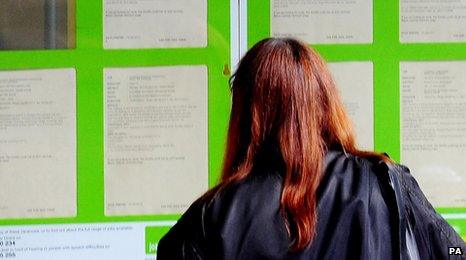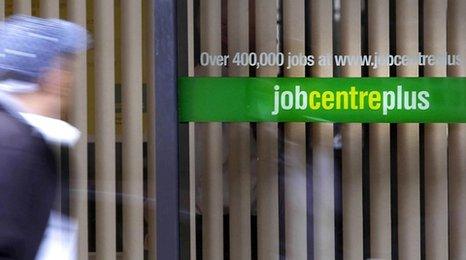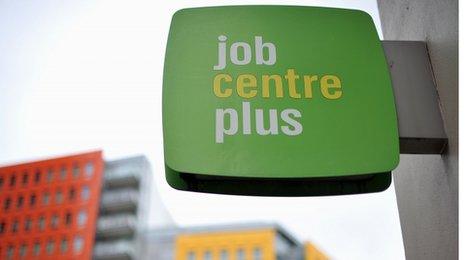Q&A: Government's work experience scheme
- Published

What is the scheme?
The government's work experience scheme was launched last January to allow people to get experience while keeping their benefits.
Jobseekers are invited to take on unpaid placements of between two and eight weeks.
Latest figures show that up until the end of November 39,000 people had taken part and half of them were off jobseeker's allowance four weeks later.
But if someone quits after the first week of a placement they could lose some of their benefits.
What's the problem?
Campaigners claim big companies are using the scheme to get cheap labour.
Twenty-one-year-old James Rayburn from Berkshire spent nine weeks stacking shelves at Tesco.
"I felt I was doing a proper job and going in there and doing what needed to be done. Then at the end of it I had nothing.
"They were kind of making the most out of me."
Tesco says it has now taken on more than 300 unemployed people through the scheme, but is also now offering a paid trial instead of work experience with the promise of a job if it goes well.
It claims James was one of the first people to be offered a placement, and the maximum time anyone can work unpaid is now four weeks rather than eight.
What does the government say?
With more than a million young people currently out of work, employment minister Chris Grayling says firms trying to help should be encouraged rather than criticised.
"I simply don't understand the mentality of people looking at this who are saying it's the wrong thing to do," says Mr Grayling.
"'It's slavery?' They are simply talking nonsense and they're damaging the prospects of the young unemployed."
There has also been confusion between the work experience scheme and another, less common initiative, which forces some unemployed people to go on unpaid placements or lose their benefits.
- Published9 January 2012

- Published16 November 2011

- Published25 November 2011

- Published21 October 2011

- Published17 October 2011
